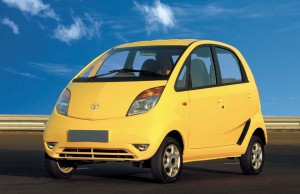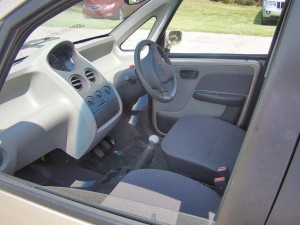The car that was once considered the second coming of the Model T is now at the end of its run: Tata Motors killed the Nano.
The small four-door car that was developed because Tata’s Motors Chairman Rajan Tata saw a family of four trying to navigate a street on a motorbike in a rain storm hit the end of its nine-year production run yesterday.
That was in 2003 and it took Tata about six years to get the first of the small cars to production, including having to shift the plant from one region in India to another after protests by farmers in the area.
Despite the setbacks, the first Nano hit the streets in India in 2009 in two trims ranging between $1,700 and $2,500.
(Fiat union protests signing of Portuguese soccer star Ronaldo. Click Here for the story.)
“The fact of unsafe travel was bothering me,” Tata told the Cornell Chronicle in 2011. “What really motivated me, and sparked a desire to produce such a vehicle, was constantly seeing Indian families riding on scooters, four or five on a scooter, maybe the child sandwiched between the mother and father, riding to wherever they were going, on slippery roads in the dark.”
In the first year, more than 9,000 Nano’s were sold, and it was thought to be a success. However, it wouldn’t take long for the car to begin its long slide into irrelevance. In 2010, a new Nano caught fire in Mumbai, making national – and international – news. It was the first of several fires across India.
By 2011, sales of the Nano fell to just 500 units. Perhaps even worse, the idea behind its creation became the final nail in its coffin. The stigma of buying the “cheapest car” became a scarlet letter rather than a selling point.
(Click Here for more about Hyundai’s South Korean union warning that the U.S. plant could close if tariffs hit.)
“It became termed as a cheapest car by the public and, I am sorry to say, by ourselves, not by me, but the company when it was marketing it. I think that is unfortunate,” Tata told the Times of India in 2013.
“I always felt that Nano should have been marketed towards the owner of a two-wheeler because it was conceived giving the people who rode on two wheels with the whole family an all-weather safe form of affordable transportation, not the cheapest.”
However, it was a reputation the company couldn’t shake and sales continued to decline.
(To see more about GM leading Ford in pickup sales through June, Click Here.)
In June 2018, the company sold just three Nanos and produced just one at the plant at Sanand. The curtains may have finally come down on a grand experiment in the Indian automobile sector.




“…sales of the Nana fell to just 500 units.” Is that for the entire year (2011)?